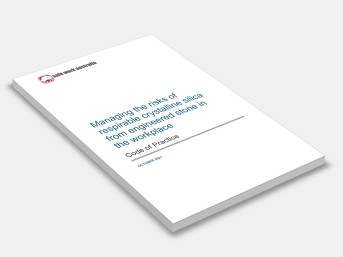Managing the risks of respirable crystalline silica from engineered stone in the workplace
Safe Work Australia
This Code is intended to be used by a range of duty holders to assist them in complying with the WHS Act and WHS Regulations. Duty holders include persons conducting a business or undertaking (PCBUs), workers and their health and safety representatives (HSR), manufacturers, importers and suppliers. It provides practical guidance on how to effectively manage risks associated with working with engineered stone and, subsequently, minimise the incidence of respirable crystalline silica related diseases, such as silicosis.
This Code provides guidance through the lifecycle of an engineered stone product including fabrication, installation, maintenance, removal and disposal.
Working with engineered stone carries a range of risks beyond those covered in this Code, such as manual handling. Safe Work Australia has published other relevant model Codes of Practice to help manage these risks including:
− Managing the work environment and facilities
− Construction work, and
− Hazardous manual tasks.
Working with engineered stone can expose workers, and other persons, to the risks of respirable crystalline silica (silica dust). Exposure to silica dust can have serious health effects, including fatal lung disease.
Contents:
Foreword
1:I ntroduction
2: Role Of Designers, Manufacturers, Importers And Suppliers
3: Specific Duties For Working With Engineered Stone
4: How To Manage And Control The Risks From Working With Engineered Stone
5: Maintaining And Reviewing Control Measures
6: Clean-up And Disposal Of Silica Dust
7: Post-installation
Appendix A: Glossary
Appendix B: Silica Dust Control Plan Template
